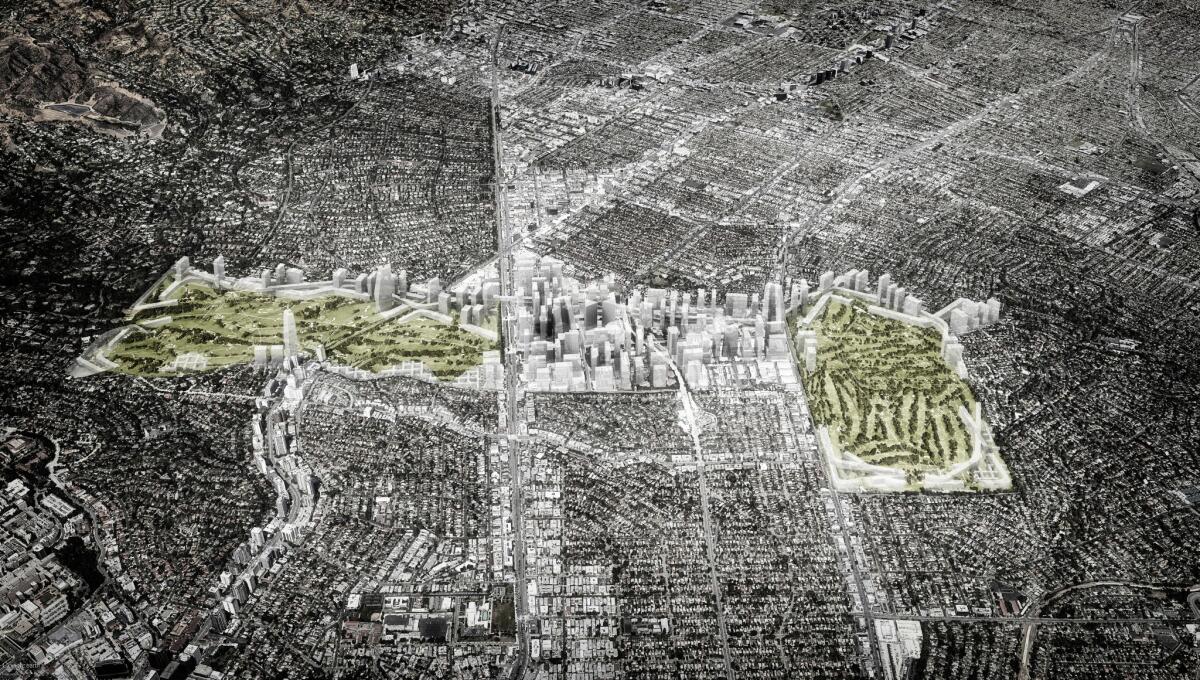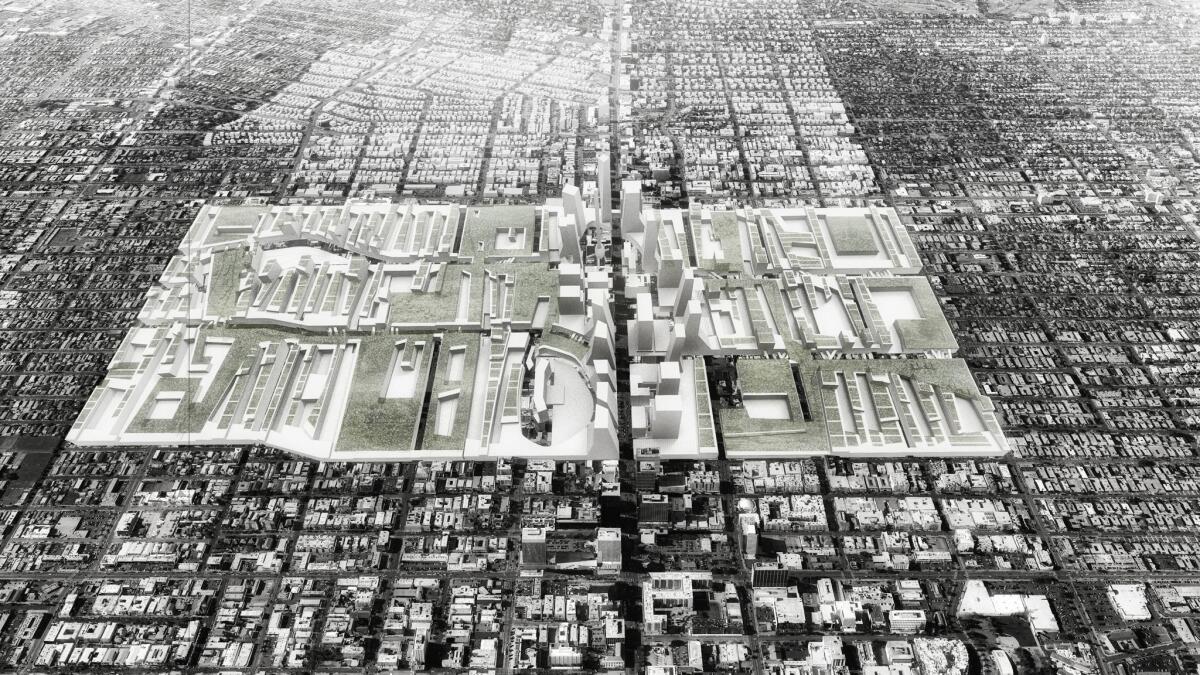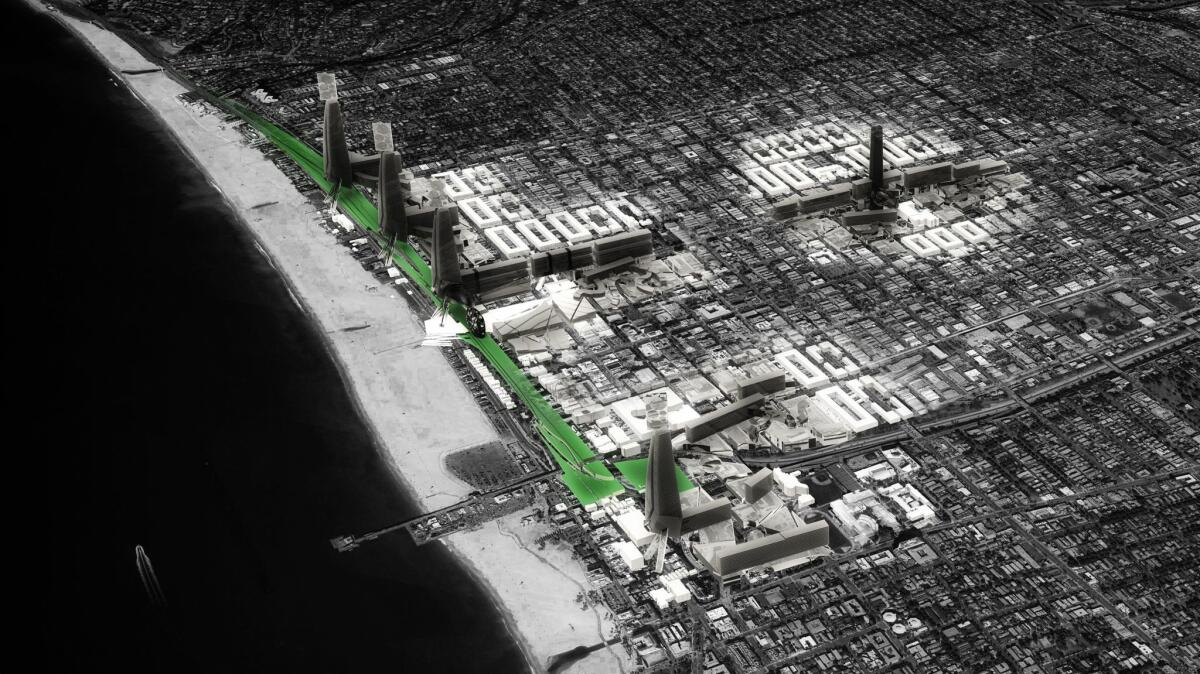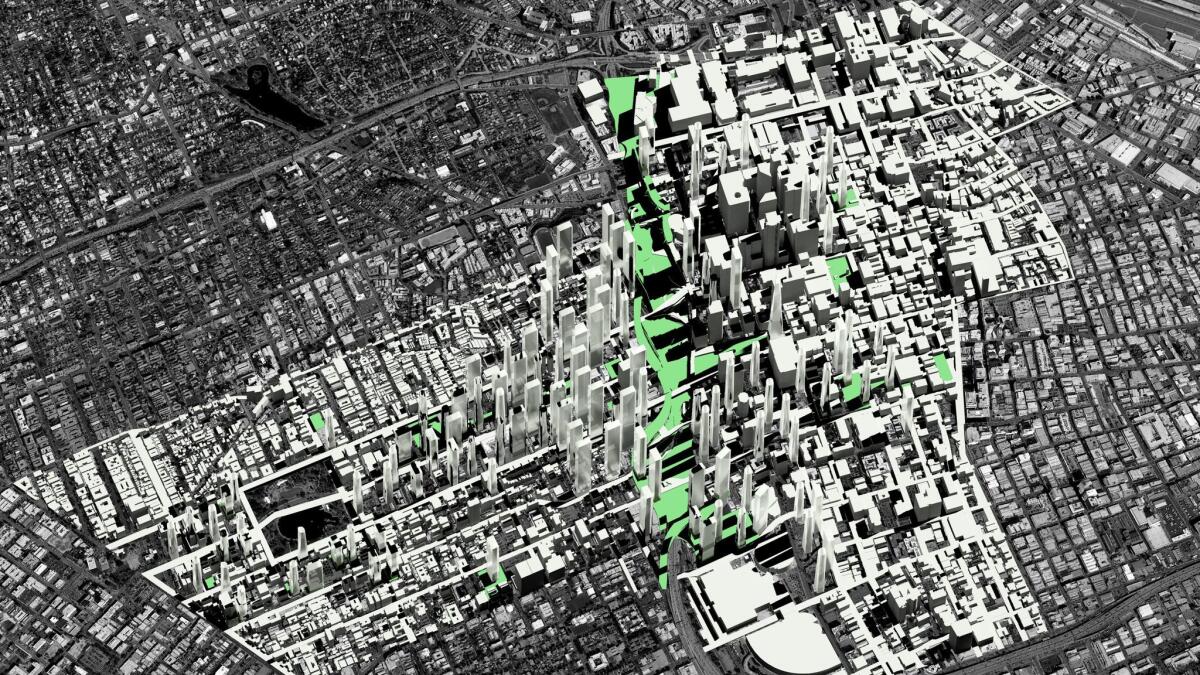Opinion: Adding 1 million people along the Wilshire corridor could help L.A. create a sustainable city

What will Los Angeles look like in 2050?
Based on climate research conducted at UCLA, the answer to that question could potentially be very bleak. L.A. will be hotter, with more wildfires and less snow in the San Gabriels. As my colleague Mark Gold, UCLA’s vice chancellor for environment and sustainability, recently described it, the changing climate will make us “sort of like a ‘Phoenix by the sea.’”
Amidst these environmental challenges, L.A. County is forecast to grow by 1.5 million people – the equivalent of adding the population of Phoenix to our hotter, drier environs.
How can we absorb an additional 1.5 million people while accounting for the impacts of climate change, advancing environmental sustainability (100% local water, 100% renewable energy, and enhanced ecosystem and human health) and urban affordability without completely destroying the character that Angelenos love about their city?
There is no easy answer to this question. Backers of transit-oriented development, who have the ear of City Hall, favor expanding rail and rapid bus routes across the county and constructing dense, multiuse development alongside those corridors. That effort, however, has drawn pushback from Angelenos who don’t want to see the character of their communities change. This perfectly reasonable desire for preservation has, unfortunately, given birth to movements like Measure LV in Santa Monica and the Neighborhood Integrity Initiative — local ballot measures that are effectively trying to freeze the region in a time capsule by hampering efforts to build new dense development.
The realities of population growth and a warming climate, however, mean that preventing change is not an option. Instead, we need to learn how to adapt and thrive in its midst.
As a thought experiment, my studio at UCLA, the Now Institute, proposes a happy medium between sweeping overhaul and stagnation — one that places 1.5 million additional people on only 1% of county land. By adding 1 million more people along the Wilshire Boulevard corridor (which already has a half million people, for a total 1.5 million) and another half million in other transit-oriented areas, we can add needed housing while preserving the neighborhood character and natural landscape of the remaining 99% of L.A. County.
The Wilshire corridor is a unique cross-section of Los Angeles. Spanning three cities over its 15.8 miles from the beach to downtown, it is home to people of diverse ethnicities and income levels, and is already three times as dense as the rest of urban L.A.
Wilshire Boulevard could easily accommodate another million residents. In fact, using Hong Kong’s residential building types, it could accommodate another 8 million people. In our relatively conservative model, the density of the Wilshire corridor would be less than that of Manhattan. The densest neighborhood in the corridor would be Koreatown, which, even after more than doubling its population, would still be less dense than Manhattan’s Upper East Side. Our proposal would extend the Purple Line light rail to Santa Monica, allowing more than a million residents to live within a half mile of a Metro stop.

This densification strategy would allow more Los Angeles residents to live a public transit-based lifestyle in a moderate coastal climate zone — one less prone to wildfires, extreme heat days and associated spikes in electricity consumption. The strategy also diminishes water demand from single-family lawns, reduces vehicular emissions associated with sprawl, and protects an area 10 times its size —150,000 acres — that would have to be developed to meet housing demand at L.A.’s current densities. By building upward instead of outward, the corridor could easily create 70% more public open space for stormwater capture, habitat, and heat diffusion.

Moreover, advancing available housing stock at a broad scale along Wilshire Boulevard reduces demand pressure on the entire L.A. housing market. Affordability depends on availability. Los Angeles is in a housing crisis not because of the proliferation of high-rise luxury apartments — which actually alleviate pressure on the rest of the housing stock and drive prices down at the macro scale — but because an artificial constraint on development limits the overall supply. Current hurdles to development and a high supply-demand gap make luxury housing the most logical option for developers today, but a building boom along the corridor would open up development opportunities for affordable housing, including micro-units and other inexpensive to mid-level housing.
Los Angeles prides itself on its diversity, inclusivity and flexibility. Generational shifts, both in the post child-rearing cohort and the younger generations, have created subsets of the population who prefer a more social, less domestic metropolitan lifestyle like that in other megacities such as London, Paris and New York. Affordable options ought to be available for those who want to live this urban lifestyle. Our model provides this option for about 10% of the population, while the remaining 90% could live as they do today.

Density is often met with resistance, But, done smartly, hyperdense development can align with neighborhood preservation goals, allowing 99% of the county to maintain its suburban skyline and lifestyle. Even within the 1% densification area, development can be targeted to protect historic buildings and neighborhoods, and to blend residential districts synergistically with retail and commercial properties.
This Wilshire demonstration study certainly isn’t the only way to deal with growth and change, but it is one example of the kind of macro-scale growth strategy L.A. will need in order to grow sustainably and thoughtfully. Alternatively, we could continue our inexorable sprawl into undeveloped northern L.A. County open spaces like Newhall Ranch. Or we could build on the current widespread transit-oriented development densification movement that shows promise, but has elicited significant blowback.
L.A. will grow, and it will change — whether we like it or not. Directing that growth and change with well thought-out, proactive and creative measures is the only way to ensure a sustainable, affordable and recognizable 2050 Los Angeles.
Thom Mayne is a UCLA distinguished professor of architecture and urban design, and is the executive director of the Now Institute.
Follow the Opinion section on Twitter @latimesopinion or Facebook
More to Read
A cure for the common opinion
Get thought-provoking perspectives with our weekly newsletter.
You may occasionally receive promotional content from the Los Angeles Times.










